|
Image from National Heart, Blood and Lung Institute What is Asthma?The word "asthma" comes to us from the Greek word ἄσθμα, ásthma, through the Latin language. It means 'I gasp for breath” and refers to a short-drawn breath, panting, or laboured breathing. Asthma is a chronic respiratory disease where the bronchial tubes constrict the passage of air. This results in severely laboured breathing and a wheezing, whistling sound as air is expelled from the lungs. Many times, the patient also has a dry painful cough, which further aggravates the mucous membranes in the nasal passages or bronchial tubes. Symptoms of Asthma
The symptoms of asthma typically occur with constriction of the chest (bronchiolar spasm) and expectoration of mucus (mucoid sputum). TriggersAsthma is believed to be due to hypersensitivity to inhaled or ingested substances commonly referred to as triggers: such as odours, pollen, dust, dust mites smoke, pollution, cold air etc. Emotional triggers include intense anger, crying, or laughing Root causeThe two main underlying categories of asthma to consider are: 1. Malnutrition due to issues with digestion, absorption, assimilation and utilisation of foods and nutrients Other aspects to explore related to malnutritition include poor dietary choices, dysbiosis and pathogen overgrowth (i.e. bacteria, moulds, yeast, parasitess, viruses), gut hyper-permeability of gut lining "leaky gut", and detoxification weaknesses). 2. Over reactive Immune system. In natural medicine the chronic cough is viewed as nature's effort to expectorate and expel mucus or irritants from the lungs, after which breathing becomes easier. It is often helpful to explore asthma as not merely the fault of an overactive immune system. The cause of asthma can be also be considered a nervous condition. One, because the the nerves are irritated, and two, because of the relationship between the nervous system and one of its functions- the immune response. Happy to help This post is designed to distil the key information from our 15 plus years in clinical practice and 8 years of degree study. We aim share with you the core principle of nutritional therapy, natural medicine, herbal medicine and energy medicine in order to support you making informed decisions around your health. If you found this post helpful sign up for our WEEKLY UPDATES where we send you special offers, and educational material designed to support you in your self-healing journey This website does not provide medical advice. The information including, but not limited to text, graphic and images, and other material contained on this website are for informational and educational purposes only. No information on this site is intended to be a substitute for professional medical advice, diagnosis or treatment. Always seek the advice of your physician or other qualified health care provider with any questions you may have regarding a medical condition or treatment and before undertaking a new health care regime and never disregard professional medical advice or delay seeking it because of something you have read on this website.
0 Comments
Psoriatic arthritis affects 30% of people with psoriasis and is classed as another kind of arthritis. It commonly occurs between ages of 15-35. In healthy skin, it normally takes around 28-40 days for new cells to move from the deepest layer of the epidermis up to the surface. Once the cells reach the top layer they naturally mature, becoming more rough, dry and flaky. In psoriasis the process only takes a few days resulting in the build up of dead skin cells and thick scales . Typical symptoms of psoriatic arthritis include:Joint pain, Tenderness, Swelling in the fingers, toes, or spine. Reduced range of motion, Morning stiffness, Redness and pain of the eye that is similar to conjunctivitis, Nail changes with pitting or lifting of the nail. Psoriatic arthritis is associated with bone erosion and deformities that affect half of the people with this disease. Skin and joint symptoms may flare up or improve simultaneously. Allergy, intolerance and sensitivity underpin over reactive immune systems typically found in autoimmune mediated diseases. The most common triggers or allergens we observed in clinical practice include ; Milk, Cheese, Casein, Lactic acid, Yogurt, Whey, Butter, Vitamin D, Vitamin C, Sodium Chloride (table salt) Chocolate, Coffee, Caffeine, Wheat Night shades ( potato, tomato, aubergine pepper) Salicylate phenolics particularly from onion Fatty acids Environmental culprits Include: Washing up liquid, Latex, Plastics Pesticides Case study For 15 years, a 35 year-old female had psoriasis all over her body along with severe arthritis of the joints affecting mobility of her hands. She was taking vitamin D supplementation and drinking milk with her tea three times a day even though she never used milk products in any other form. After she was tested and treated for milk and milk products, along with Vitamin D, her psoriasis disappeared and her health greatly improved. The body can be intolerant to natural and unnatural substances. Once it becomes intolerant it is not able to absorb or assimilate nutrients from these items. The natural approach Identifying triggers and then temporarily remoe them while fixing the immune response (using a personalized protocol ). Then integrating natural medicine can help reduce and prevent further inflammation. Common natural medicines that can be helpful in psoriasis (assuming there is no intolerance to these factors) Essential fatty acids/Evening primrose/ borage/fish oils/ turmeric/ curcumin/ bromelain/ quercetin. All these work on these anti inflammatory pathways. This website does not provide medical advice. The information including, but not limited to text, graphic and images, and other material contained on this website are for informational and educational purposes only. No information on this site is intended to be a substitute for professional medical advice, diagnosis or treatment. Always seek the advice of your physician or other qualified health care provider with any questions you may have regarding a medical condition or treatment and before undertaking a new health care regime and never disregard professional medical advice or delay seeking it because of something you have read on this website.
In this article we discuss the importance of optimal digestion and absorption. The Gut and Complex and Chronic DiseaseMany of our clients present with chronic issues such as:
We find that in nearly all cases these clients are not digesting, assimilating, absorbing, or utilizing their nutrients optimally. Therefore, they are really suffering from deficiency and and malabsorption disorders, producing abnormal enzymes leading to abnormal functions in the body. Such clients also typically present with poor digestion: bloating, gas, acid reflux, constipation or diarrhoea and helicobacter pylori infection, yeast overgrowth/ viral overload, dysbiosis or parasites. DigestionThe breaking down of foods - occurs in the mouth stomach and small intestine with support from the liver and pancreas. By the time the food you eat gets to your large intestine, most of the digestion is done. For optimal digestion the body requires a healthy mucosa membrane and correct levels of
MobilityFood moves along the intestinal by a muscular motion. Smooth muscles alternately contract and relax gently propelling food along the passage. This motion is called peristalsis. Absorption Absorption is the movement of digested food molecules through the epithelial cells lining the intestines, into the blood and through the portal vein to the liver where they are filtered by the liver So the quality of your blood and the health of your liver and body directly correlates to the contents of your digestion and how well you are able to digest, absorb, assimilate and utilize it. Digestion and absorption issues affect every other organ and system in the body leading to compounded hormone imbalances and organ weakness and a myriad of symptoms. Each individual will have an organ or system that is more susceptible to deficiency based on factors including genetics, neuroendocrinology, and lifestyle. Happy to help.This post is designed to distil the key information from our 15 plus years in clinical practice and 8 years of degree study. We aim share with you the core principle of nutritional therapy, natural medicine, herbal medicine and energy medicine in order to support you making informed decisions around your health. If you found this post helpful sign up for our weekly updates below where we send you educational material designed to support you in your self-healing journey The programme doesn’t require more time except the time you already designate to eating. Designed by a working mum of 3, degree qualified naturopath nutritional therapist with herbal medicine and tried and tested for 7.5 years in groups and 1-2-1. The natural medicines are designed to restore the optimal function of the underlying organs and systems. So this means NOT taking masses of supplements or becoming dependent on them. The nutritional changes are designed to be easy and rewarding to implement. They are also designed to correct digestive issues and be easy to stick to in order to prevent the problems occurring again. To find out if we are a good fit to support you book your free 15 minute consultation here This website does not provide medical advice. The information including, but not limited to text, graphic and images, and other material contained on this website are for informational and educational purposes only. No information on this site is intended to be a substitute for professional medical advice, diagnosis or treatment. Always seek the advice of your physician or other qualified health care provider with any questions you may have regarding a medical condition or treatment and before undertaking a new health care regime and never disregard professional medical advice or delay seeking it because of something you have read on this website.
What are lectins?Lectins are a class of protein found in almost all foods especially legumes and grains. The most common lectins that people can react to are: Pea lectins Peanut lectins Wheat lectins Kidney and soya bean lectins Potato lectins Tomato lectins Squash lectins Symptoms of lectin intolerance include:Nausea after meals Bloating Abdominal cramps Fatigue and tiredness (especially after the meal) Joint pain Depression ADHD Skin rashes The reactions are variable depending on the individual. It can take minutes, hours, or days to show up making it difficult to pinpoint. Some types of lectin are more problematic than others. For example, the lectin phytohemagglutinin found in red kidney beans can cause red blood cells to clump together as well as induce nauseas, vomiting, and bloating. As lectins bind to carbohydrates they resist being broken down. Not only can they inhibit the body's ability to process carbohydrates (which can cause yeast overgrowth) but they have also been shown to interfere with the absorption of minerals such as calcium, iron, phosphorus and zinc. Since they can stop the absorption of nutrient into the body.they are often referred to as an anti-nutrient. Lectins and autoimmune diseaseLectins are linked to increased gut permeability (leaky gut) which has been found to drive autoimmune diseases. Mal digestion of the carbohydrates that are bound to lectins may disrupt the gut flora and since gut is responsible for 75% of the immune system an unhappy gut means an unhappy immune system. In addition research indicates that lectins are able to bind and adhere to cells in the body resulting in inflammation and potential immune system confusion whereby the body mistakes its own cells as being foreign eliciting an autoimmune response (broadly defined as the body attacking its own cells) The good news is that because lectins are water soluable - cooking - especially with wet high-heat methods like boiliing, stewing or even soaking in water for several hours can inactivate lectins. 4 tips to remove lectins from your favourite foods1) Soak/ rinse/ strain The tradition of soaking and rinsing grains before use is a wise age-old practice and naturally removes or reduces lectins before use. With beans soaking then straining then cooking then straining removes most lectins. Cooking for long periods helps eliminate symptoms of indigestion commonly associated with beans and legumes. 2) Cook wet with high heat The increase in use of pea protein in vegan protein poweder can be a major source of intolerance for many. The solution is to use fresh frozen peas (1 cup) per smoothie. Or if you suspect an intolerance boil the peas for 15 minutes and then cool and freeze ready for your use. 3) Peel High lectin plant foods such as aubergines, squash and cucumber can be peeled and deseeded to remove the lectin filled hull, seed or rind. 4) Ferment The process of fermenting allows beneficial bacteria to break down plant and vegetables harmful and defensive substances. For instance choose fermented soy products such as tempeh and miso. Fermenting doesn't eliminate all lectins but denatures them and resduces them significantly This website does not provide medical advice. The information including, but not limited to text, graphic and images, and other material contained on this website are for informational and educational purposes only. No information on this site is intended to be a substitute for professional medical advice, diagnosis or treatment. Always seek the advice of your physician or other qualified health care provider with any questions you may have regarding a medical condition or treatment and before undertaking a new health care regime and never disregard professional medical advice or delay seeking it because of something you have read on this website.
Are you struggling with multiple symptoms that seem to relate to thyroid dysfunction? Did your GP tell you your results are normal? Are you ready to dig a bit deeper and find out what is really going on? Many cases of hypothyroid go undiagnosed because standard tests do not identify problems in all cases. If you are still concerned about your thyroid symptoms here’s what you can do: Symptoms of low thyroid function Fatigue • Weakness • Weight gain/ difficulty losing weight • Dry hair • Poor skin • Headaches • Anxiety/ panic attacks • Depression • Decreased memory and concentration • Hair loss • Sensitivity to cold • Muscle and joint pain • Constipation • Low libido • Palpitations • Dizziness • Water retention • PMS 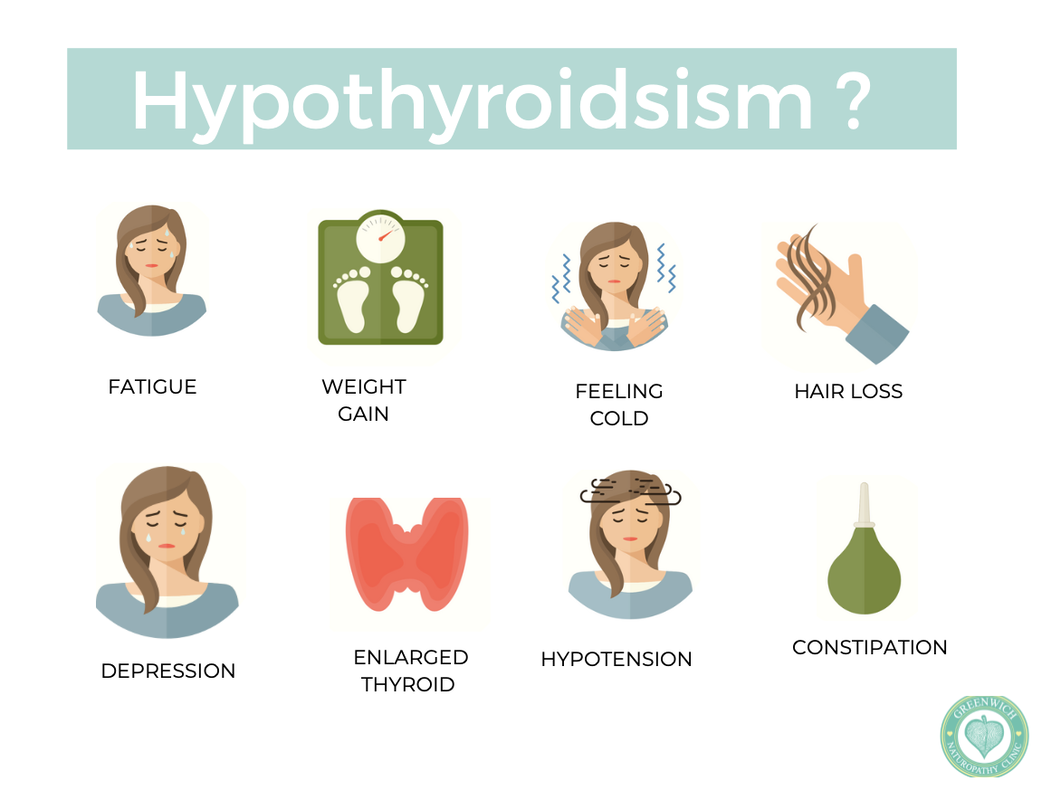 Thyroid test results say normal ?There are two main reason why your results can show as normal with a GP Thyroid test: 1.) The references ranges used are quite broad which means that a more subclinical issue may easily be missed. It’s important to remember that everyone is different and what is ‘normal’ for one person may not be ‘normal’ for the next. In other words the GP is looking for “markers” of disease pathology and so if you are significantly sub-optimal, but not hitting the end point markers of “disease” you will be told your ok. 2) Your GP 2will often only test Thyroid Stimulating Hormone (TSH) and Thyroxine (free T4). However TSH and free T4 will give the clinician an idea of what is happening with central thyroid regulation, however these markers don’t give much indication of peripheral regulation (conversion of free T4 into active (T3) and inactive forms (reverse T3) which happens at a cellular level in target tissues) which is where many problems can occur. At Greenwich Naturopathy we use health mot screening with food intolerance to gain a birds eye view of the different systems and organs to see where ‘blocks’ in optimal function may be occurring. Key areas we look at include, adrenal function, thyroid function, digestive function, gluten sensitivity, gliadin sensitivity, vitamin, and mineral absorption. For instance, weak adrenals, kingpins in your endocrine system, can “rob” from the thyroid and cause them to become depleted over time. A sensitivity to synthetic forms of minerals including fluorine or bromine can block thyroid function. A sensitivity to gluten and its halogen compound gliadin has also been shown to affect thyroid function.So the health mot screening with food intolerance provides an excellent snapshot of the key areas of strength and weakness in our initial assessment process. Other factors explored on the health mot screening with food intolerance include: heavy metal toxicity, immune imbalance, low levels of nutrient absorption such as selenium and zinc, and leaky gut can also contribute. If the client also presents with signs of autoimmunity such as psoriasis or alopecia (and depending on the clients budget) , we may also consider a deeper dive with a comprehensive blood test. Markers analysed include TSH, total T4, free T4, free T3, anti TG antibodies and anti TPO antibodies to assess both central and peripheral thyroid function as well as thyroid auto-immunity. This website does not provide medical advice. The information including, but not limited to text, graphic and images, and other material contained on this website are for informational and educational purposes only. No information on this site is intended to be a substitute for professional medical advice, diagnosis or treatment. Always seek the advice of your physician or other qualified health care provider with any questions you may have regarding a medical condition or treatment and before undertaking a new health care regime and never disregard professional medical advice or delay seeking it because of something you have read on this website.
When we talk about yeast overgrowth, we’re often referring to an overgrowth of Candida albicans in the gut. Usually, this yeast co-exists with our gut flora in ratios that are not detrimental to you the host. It is estimated that more than 70% of us have strains of this yeast in our guts. The issues arise when it grows out of control. An overgrowth of yeast such as Candida can cause inflammation in your gut leading to compromised health across a myriad of systems causing a wide range of symptoms. The six common symptoms of Candida albican overgrowth
What are pathogens and do I need to worry about them? A pathogen is defined as a bacterium, parasites, or other microorganism that may cause disease. Pathogens including Candida albicans release up to 80 different metabolites, including uric acid, ammonia, and a neurotoxin named acetaldehyde. Pathogens rarely exist in isolation because the toxins they produce create and environment and terrain that are favourable to the proliferation of other pathogens. It is important to identify the chief pathogen and tailor your protocol accordingly. Candida and headaches, migraines and brain fog
What causes yeast and candida albican overgrowth?
How to get rid of candida albican and other pathogens Treating Candida is not always easy because it is such an opportunistic pathogen and many of the symptoms of yeast overgrowth also coincide with parasite infections and dysbiosis (an imbalance in gut microbiome with high levels of non-beneficial bacteria present). What is Candida die-off When large amounts of fungal and yeast cells are killed of rapidly, candida die-off may occur. The medical term for this is the Herxheimer reaction also referred to as a Herx reaction or healing crisis. The symptoms you experience can be a worsening of the very issues you are aiming to treat. Hence the term healing crisis to describe the process of getting worse before you get better. The Herx reaction is caused by an immune cascade that challenges the immune response due to the rapid release of endotoxin like products released by the death of harmful microorganisms within the body during antibiotic, antifungal or antifungal treatments. Certain key factors can exacerbate the severity of a Herx reaction, including and already overwhelmed or ‘stressed’ liver. In fact, an underlying cause of yeast being able to overpopulate the gut is a liver that has become increasingly stressed and unable to clear out the toxic by-products of normal metabolic processes. This can then cause a knock on effect to the gut health and is associated with many of the same symptoms as candida overgrowth. Our method is designed to avoid and reduce the level of Herx reaction our clients experience. For instance, in most cases the liver will also be working at maximum capacity to filter out normal day to day toxins out of the body. Therefore, in our treatment protocols we show you how to avoid die-off symptoms by strengthening the 5 elimination organs first: the gut, the kidneys, the liver, the lungs and the skin, How to get rid of Candida albican and other pathogens (without die off) In our clinic, we use a multitude of antifungal compounds, beneficial yeasts, binders, probiotics and, plants, herbs, dietary interventions, and nutrients to deal with yeast, bacteroid, parasites and their unpleasant metabolites However, for a permanent and immediate solution it is important to address the underlying factors that allowed the yeast or pathogen to take up residence in the first place. We recommend a gradual process that results in improved energy and wellbeing that makes it easier to want to adhere to the dietary and lifestyle changes that underpin the bespoke natural medicine protocol. The approach we use is not massively restrictive because we focus on strengthening you and your digestion first. Step 1 Test – we like to use the Health MOT Screening with Food Intolerance because it shows the levels of pathogens but also the systems affected. Step 2 Improve your diet: Candida overgrowth is often associated with gut inflammation, intestinal permeability (leaky gut), and chronic digestive problems. These symptoms can be addressed by a whole food natural diet that is high in fibre, low in refined sugar, and full of anti-inflammatory foods. Here are some simple rules to get you started:
The most important of these (and sometimes the hardest) is to avoid added refined sugars. To reduce die- off you can do this gradually and by replacing refined sugars such as dextrose and high fructose corn syrup with whole fruit sugars with the fibre rich skin on where possible. Where possible, you should also avoid inflammatory foods like processed foods, alcohol and caffeine as much as possible. By doing this, you can boost your gut health and speed up your recovery. Step 3 Pathogen Cleanse Taking a good probiotic will crowd out the Candida yeast and start to heal your gut. And natural antifungals will help to reverse the Candida overgrowth. Again, knowing the chief king pin pathogen (i.e. bacteria, yeast or parasite) will save time and generate more permanent results. This website does not provide medical advice. The information including, but not limited to text, graphic and images, and other material contained on this website are for informational and educational purposes only. No information on this site is intended to be a substitute for professional medical advice, diagnosis or treatment. Always seek the advice of your physician or other qualified health care provider with any questions you may have regarding a medical condition or treatment and before undertaking a new health care regime and never disregard professional medical advice or delay seeking it because of something you have read on this website.
What is seed cycling? Seed cycling typically involves eating pumpkin and flax seeds during the first, follicular phase (Days 1-14) of your cycle, when your period starts. You consume a combo of sunflower and sesame seeds and during the second, luteal phase (Days 14-28), or after ovulation. What does seed cycling do? When your hormone are balanced, in the first phase of your cycle oestrogen levels should be rising. In your second phase of. your cycle progesterone levels rise (while estrogen levels slowly decline). An imbalance between these hormone levels can contribute to symptoms of hormone imbalance such as painful or irregular periods, PMS, PCOS, fibroids, acne and the menopaus In theory, by eating specific compounds found in flax, pumpkin, sesame and sunflower seeds at specific times during the menstrual cycle we can support the body's production of oestrogen and progesterone That’s because seeds contain a type of fibre called lignans. Eating the lignans found in flax and pumpkin seeds, during the first phases of your cycle, it is thought to boost oestrogen production. Eating sunflower and sesame seeds in the second phase is thought to boost progesterone as your body metabolises another lignin-related compound called enterodiol. What are the Pro's and Con's of Seed Cycling? Pros
Cons of seed cycling
How can You Simplify Seed Cycling The easiest way to incorporate seeds into your diet is with breakfast - add to smoothies, oatmeal or nourish bowl. Monday to Friday rotate 1-2 tablespoon of one type of seed including flaxseed, pumpkin, sesame, sunflower and chia seed. Other creative ways include pesto with pumpkin and flax seeds and/or seed butters. Should You try Seed Cycling? Honestly the short answer is no, it is way to fussy. Should you eat seeds on a daily basis - yes, yes and yes. So if cycling them helps you to maintain the habit then do it. Otherwise I recommend committing to one smoothie per day as a mid morning snack or breakfast to get them incorporated. If your mornings are more rushed make the smoothie, smoothie bowl or warm wholegrain cereal night before. By doing this for breakfast consistently you will find it more likely to stick as a habit This website does not provide medical advice. The information including, but not limited to text, graphic and images, and other material contained on this website are for informational and educational purposes only. No information on this site is intended to be a substitute for professional medical advice, diagnosis or treatment. Always seek the advice of your physician or other qualified health care provider with any questions you may have regarding a medical condition or treatment and before undertaking a new health care regime and never disregard professional medical advice or delay seeking it because of something you have read on this website.
Why do we recommend Maple Syrup? At GNC we regularly recommend the use of maple syrup in our programmes for two main reasons: 1) Unlike refined cane sugar – which undergoes a long, complex manufacturing process– maple syrup is relatively a much more natural, unrefined product. 2) It's rich in antioxidants that can protect cells from DNA damage and mutation. The medical journal Pharmaceutical Biology has identified up to 24 different antioxidants contained in maple syrup which are also beneficial for reducing free radical damage that can cause inflammation and contribute to the formation of various chronic diseases. How We Choose Maple Syrup Make sure it is not "flavoured” maple syrup which is highly refined. Make sure pure maple syrup is the only ingredient, not refined cane/beet sugar or high fructose corn syrup. Ideally organic whenever possible, which ensures the trees weren’t treated with any chemicals. All types of pure maple syrup is either classified as “grade A” or “grade B.” Both grade A and grade B maple syrups can be good choices, as long as they are pure and free of preservatives, artificial dyes and flavours. (Research indicates Grade B may be higher in antioxidants than Grade A so slightly more favourable!) This website does not provide medical advice. The information including, but not limited to text, graphic and images, and other material contained on this website are for informational and educational purposes only. No information on this site is intended to be a substitute for professional medical advice, diagnosis or treatment. Always seek the advice of your physician or other qualified health care provider with any questions you may have regarding a medical condition or treatment and before undertaking a new health care regime and never disregard professional medical advice or delay seeking it because of something you have read on this website.
Do you suffer from headaches or migraines? Maybe you have an intolerance to salicylate phenolics. An intolerance to salicylate phenolic is indicated in our clients who typically suffer from a wide range of issues including:
What is a salicylate? Salicylates are chemicals produced naturally by plants as a preservative and as a natural defence against harmful pests and bacteria. They can be found in natural form in certain fruits, vegetables, herbs and plants. Salicylates are also widespread in manufactured products, such as medicines (salicylates are a key ingredient in aspirin), solvents, household cleaning goods and health and beauty products. What are the signs and symptoms? Salicylates are thought to over stimulate the central nervous system of people whom they affect. Bringing on emotional extremes of feelings of elation followed by feelings of depression. Symptoms are therefore varied vary but can include dark rings around the eyes, swelling of the eyes, hands and feet, a rash, hives, nasal congestion, breathing difficulties and asthma-like symptoms. Stomach pain, diarrhea, constipation or nausea are also common symptoms. Behavioural symptoms, more commonly seen in children, can include hyperactivity, aggression and head banging. In adults we see symptoms similar to chronic fatigue. It is rare for someone to suffer anaphylactic shock however this can occur in severe cases. Are there any tests available? While there are currently no blood tests available, at GNC we use a US-imported screening method to test for sensitivity. Can anything help me? The most effective way to begin to solve the problem of a reaction to salicylate phenolics is to eliminate man made salicylate compounds from your diet and lifestyle. So this includes most chemical laden grooming, hygiene, and domestic cleaning products and all food additives including:
Salicylates in Food Very high Fruit & vegetables: dried apricots, dates, currants, raisins, prunes. Herbs & spices: aniseed, cayenne, celery powder, cinnamon, cumin, curry powder, dill, garam masala, mace, mustard, oregano, paprika, rosemary, sage, tarragon, turmeric, thyme, Worcester sauce. Beverages: cordials, fruit flavoured drinks, fruit and vegetable juices. High Fruit: apples, berries, citrus fruits, figs, grapes, guava, kiwi, pineapple. Vegetables: broccoli, chicory, chilli peppers, gherkin, peppers, radish, water chestnut. Herbs & spices: allspice, basil, bay-leaf, chilli, cloves, ginger, mint, nutmeg, black/white pepper, pickles. Nuts:almonds, macadamia, peanuts with skins, pistachio, pine nuts. Beveridges: coffee, tea, Benedictine, Drambuie, port, rum, Tia Maria. Moderate Fruit: apricots, cherries, dates, grapefruit, lychee, all melons, peach, plum. Vegetables: asparagus, aubergine, avocado, cucumber, tinned/puree tomatoes. Herbs & spices: cornflour, yeast extracts. Nuts: Brazil nuts, desiccated coconut, peanut butter, walnuts. Beverages:beer, cider, coca cola, rosehip tea, sherry, red/white wine This website does not provide medical advice. The information including, but not limited to text, graphic and images, and other material contained on this website are for informational and educational purposes only. No information on this site is intended to be a substitute for professional medical advice, diagnosis or treatment. Always seek the advice of your physician or other qualified health care provider with any questions you may have regarding a medical condition or treatment and before undertaking a new health care regime and never disregard professional medical advice or delay seeking it because of something you have read on this website.
We are very excited to welcome the new buckwheat pancake stall 'Meru Galettes' at Greenwich market. We often talk about the power of buckwheat at GNC and we're glad to see some love for this supreme superfood.
In spite of it's misleading name buckwheat is completely gluten-free and wheat-free, so it's ideal for celiac disease sufferers and people with gluten intolerance. While it's as tasty as any grain it is in fact a seed, rich in mono saturated essential fats (winners for the heart) and boasting more protein than rice, wheat or millet. It is also high in the amino acids lysine (potent antiviral for you cold-sore sufferers) and arginine (a great for alleviating caffeine withdrawal). With their commitment to providing organic, biodynamic and local produce we can highly recommend the madagascan chocolate and coconut crepe for all you plant based/ vegan/ Paleo/ eco conscious foodies out there. |
AuthorNaturopath Nutritional and Herbal Medicine Therapists Providing support & programmes designed to restore health & optimise wellbeing. Archives
December 2023
Categories |
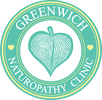
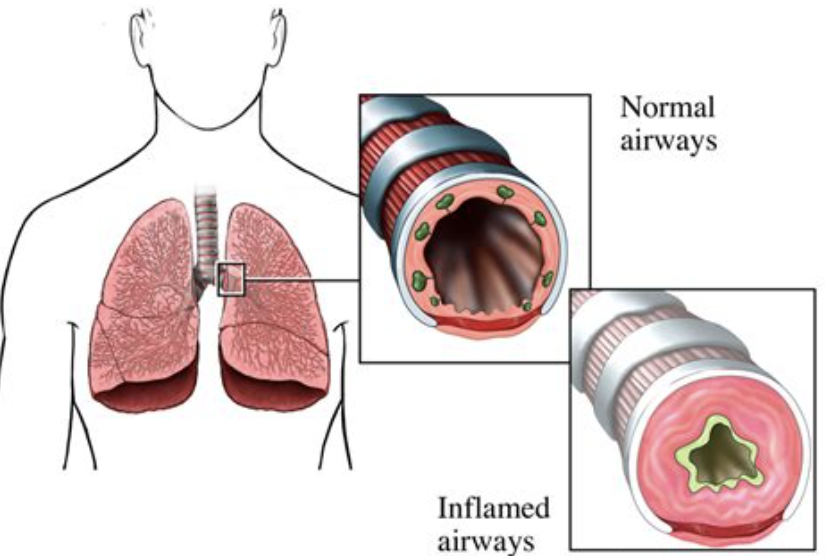
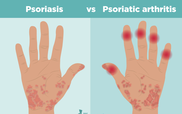
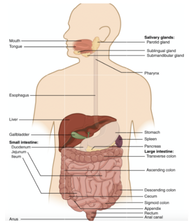

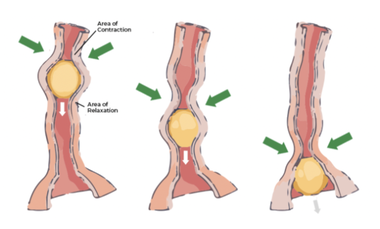
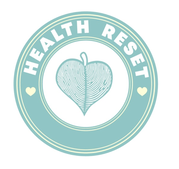
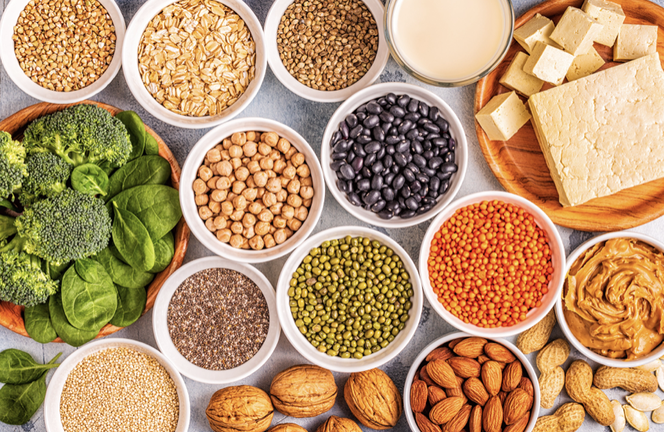







 RSS Feed
RSS Feed
